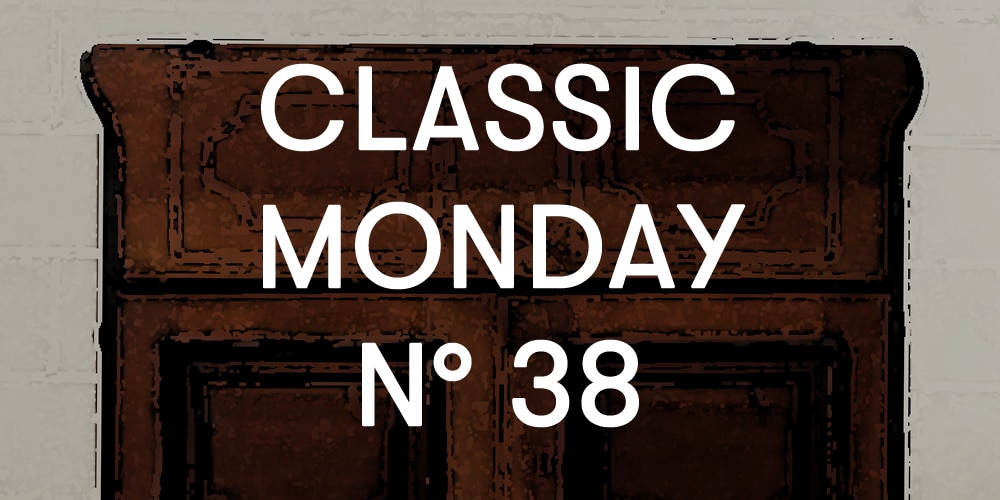
Il protagonista del nostro Classic Monday di oggi é un arredo tanto comune quanto inusuale.
It is in fact a service cabinet with small dimensions, which could therefore be placed in any room of the house.
By definition, so-called service furniture could be used for various domestic functions. Equipped with drawers for objects, or to store linen, they were often also used as support surfaces.

Ours, however, is characterized by the architecture and the workmanship absolutely special.
Supported by four shelf feet, on the front it has two panelled doors. But the peculiarity is in the lifting door, under which four other drawers are hidden; supported by two pullers equipped with a spring mechanism, it becomes an extension of the top, transforming the furniture into a desk. It is therefore transformed into a piece of furniture that no longer acts only as a container, but also as a support for cultured activities such as writing or reading.
What at first looks like a rustic-shaped piece of furniture, in reality must have been made for a client of a certain level.
Probably a bourgeois family, which needed functional furniture for domestic life; but at the same time cultured enough to have furniture that could be used specifically for other activities. A wealthy and literate family, the latter element not insignificant in the eighteenth century, the era to which the cabinet belongs. Being able to afford quality furniture, as evidenced by the spring mechanisms of the pullers that support the top, is an indication of the economic comfort that the owners had to enjoy.
In walnut wood, the high quality is also evidenced by the elegant blackened oak threads and the carved and ebonized frames, typical of the production of the Lombard area.
On this occasion they create refined geometric games that make our furniture very special. The same design on the front is also present in the back, finished to day and therefore making it a piece of furniture from the center.
Our furniture is also characterized by the absolute singularity in the typology. In the eighteenth century are very common sideboards or cabinets of different sizes, to store and store the objects of the house, or flaps, whose opening top can be used as a desk. This cabinet stands out for its uniqueness, bringing together different types and methods of use, in a result that is still unusual and original today.



















